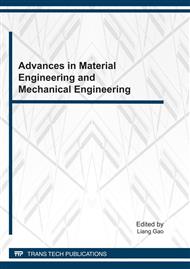p.12
p.17
p.23
p.28
p.33
p.39
p.45
p.51
p.55
Study on Statistical Damage Softening Constitutive Model and Determination of Parameters for Rock Based on Lognormal Distribution
Abstract:
Based on the property that micro-cells strength is consistent with lognormal distribution function, this paper presented a new statistical damage softening constitutive model simulating the full process of strain softening for rock. Through discussing the characteristics of random distributions for rock micro-cells strength, lognormal distribution assumption is tested by Kolmogorov-Smirnov test in statistics, and the reasonable method of geometry boundary condition is selected to determine model parameters that can be easily applied to the situations under different complex conditions. Gabbro experiment comparative analyses show that the new damage softening constitutive model is rational and convenient in engineering.
Info:
Periodical:
Pages:
33-38
Citation:
Online since:
July 2011
Authors:
Price:
Сopyright:
© 2011 Trans Tech Publications Ltd. All Rights Reserved
Share:
Citation:


